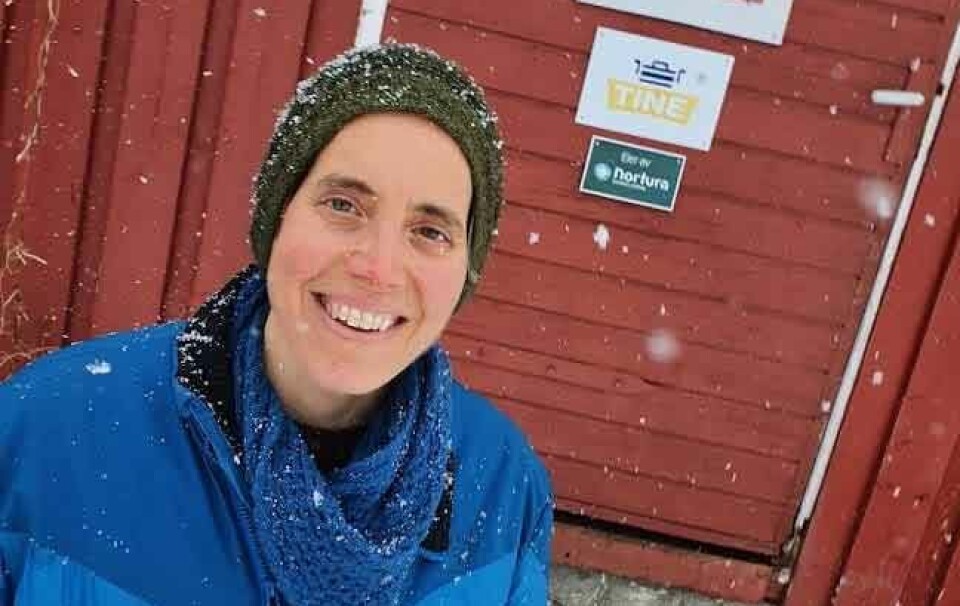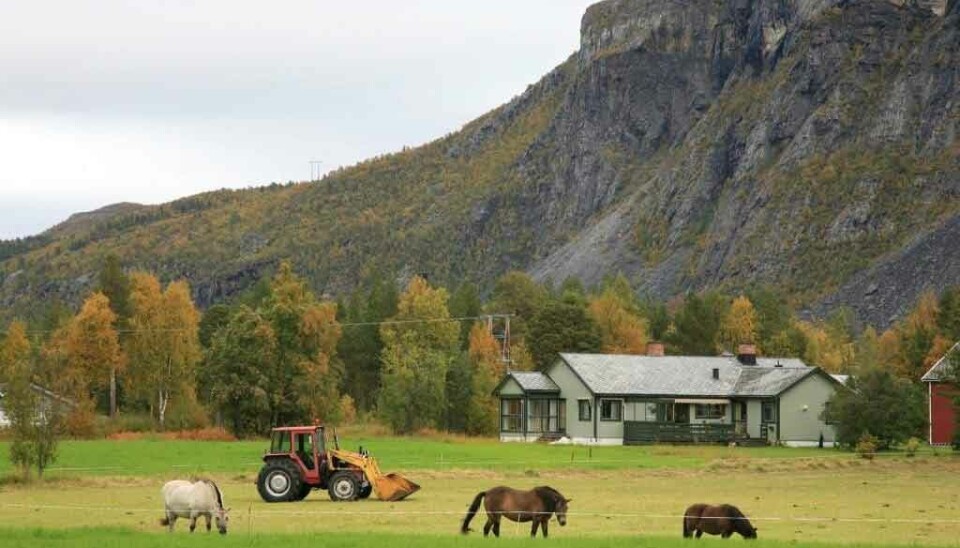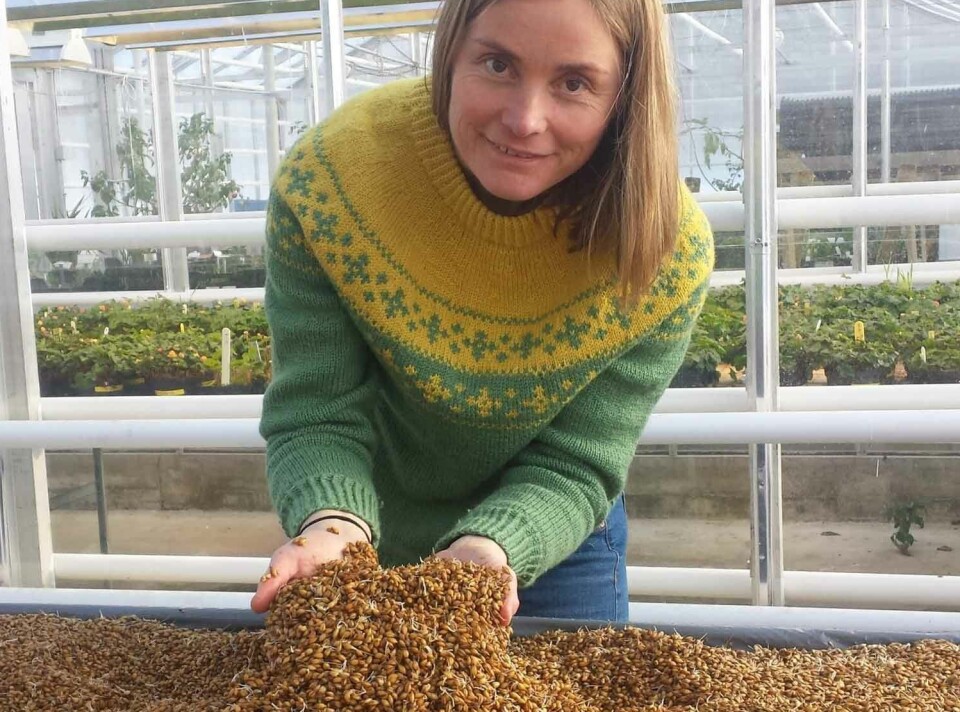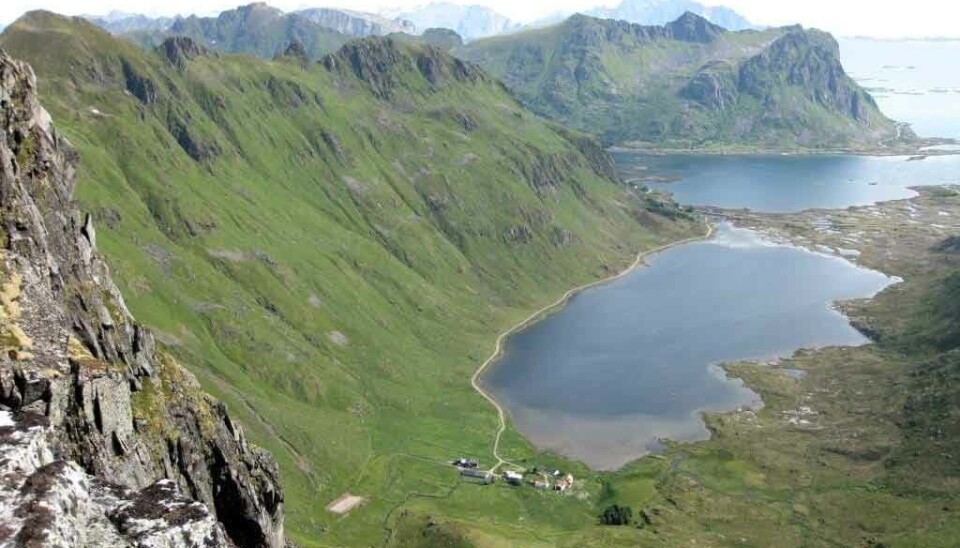By: John Olav Oldertrøen and Morten Günther // Norwegian Institute of Bioeconomy Research
Sustainable land management involves using land and natural resources in a way that balances economic, social, and environmental considerations. Preventing the conversion of northern Norway’s scant supply of agricultural land is crucial, but it is equally important to ensure that these lands are actively farmed and properly maintained. Additionally, the use of grazing areas in the outfields must be sustained. The aim of land management is to ensure that land is utilised to meet current needs without compromising the ability of future generations to do the same.

“Northern Norway has very little land suitable for food production. Sustainable land management, therefore, requires strict soil conservation, encompassing both cultivated and cultivatable land, as well as the safeguarding of soil quality and soil health through active farming practises. At the same time, it is crucial to counteract overgrowth and resolve conflicts of interest that restrict grazing in the outfields,” says researcher Frøydis Gillund at the Tromsø branch of the Norwegian Institute of Bioeconomy Research (NIBIO).
“This is also essential from a preparedness perspective. Due to climate change, areas in northern and temperate regions are expected to become increasingly significant for global food production and Norwegian food security,” she adds.
Studying three municipalities

As part of the CoastShift research project, researchers investigated how agricultural land and outfields are managed in three selected municipalities in northern Norway: Alta in Finnmark County, Tromsø in Troms County, and Vestvågøy in Nordland County. These are active agricultural municipalities, each facing significant pressure on land resources.
“We started by reviewing the municipalities’ current policy framework to identify their established goals and what tools they intend to use to achieve them,” explains Gillund.
“We then interviewed municipal employees to identify resource-related barriers that challenge their ability to sustainably manage land for agriculture. We also developed an agricultural land accounting system for the three municipalities and presented our method to the employees for discussion.”
Land-use plans are essential
The national soil protection strategy, introduced in 2023, highlights planning under the Planning and Building Act as the most important tool for safeguarding soil and ensuring sustainable land use planning. The municipality is the primary planning authority, and the planning system is its most important management tool.
“Our findings show that the selected municipalities generally have updated plans that align with national and regional policies,” continues Gillund.
“The key management tool for municipalities is their comprehensive community and land-use plan. The land-use plan is legally binding. It designates where development is permitted within the municipality and which areas are intended for uses such as agriculture. This is important to ensure a long-term, sustainable development and management of land, nature, and cultural heritage. For example, all three municipalities have mapped key agricultural areas and made them conservation zones in their land-use plans, to protect important farmland and grazing areas.”

Low capacity, complex rules

The researchers examined the challenges faced by the three municipalities in shaping resource management policy, based on interviews with employees in the planning and agricultural departments.
“The main impression is that the three municipalities are doing a lot of good work in land-use planning and have strong professional teams with good internal collaboration procedures within their administration,” says NIBIO researcher Hilde Halland.
“However, limited capacity is a challenge. This may result in slower planning procedures, inadequate enforcement of cultivation obligations, and lack of opportunity to support innovation within the agriculture sector.”
A crucial measure for sustainable land use is a “plan overhaul”, which among other things involves retiring outdated plans. Municipalities often have hundreds, sometimes thousands of plans, many of which are old plans that have not been implemented. While a plan overhaul is desirable, it is very demanding, both legally and in terms of capacity.
Municipal employees also report that the regulatory framework has become more detailed and harder to navigate, which complicates communication with the public. Increasing demands for regulation and extensive time spent on legal assessments can come at the expense of professional evaluations of what constitutes good land use.
“The best way to preserve agricultural land is to ensure it is actively farmed. Obligatory cultivation requirements must be enforced. It is particularly challenging to regulate land use in rural areas, as permit applications are often processed on a case-by-case basis. This weakens the holistic approach to land management, making it more difficult for people to live in rural areas,” continues Halland.

Politics and priorities
The employees indicated that securing political backing for strategic plans is generally easy; however, disputes and competing interests commonly emerge in decisions regarding specific cases. Political autonomy is important—especially where decisions about land, soil, and nature are concerned. Politicians in the three municipalities approach these issues differently:
- In two municipalities with growing populations, business and residential development often outweigh agricultural interests.
- In the third municipality, the understanding is that many forces, including political initiatives in the municipality, are now moving in a more sustainable direction that strengthens soil conservation.
The researchers emphasise the need to improve politicians’ competence through enhanced training and to create apolitical forums where the municipal administration and politicians can discuss topics of relevance.
A lack of legal expertise is also highlighted as an issue. For instance, political resolutions can sometimes be contrary to law, yet they are seldom assessed by the County Governor.
Political will to prioritise protection of agricultural land is also linked to attitudes in society.
“We are seeing increased public awareness and knowledge about the importance of preserving nature and, to a lesser extent, agricultural land and soil,” concludes Halland.
Agricultural land accounting

NIBIO was tasked with developing a specific farmland accounting system based on the national strategy for soil protection adopted in 2023. Alta, Tromsø, and Vestvågøy served as pilot municipalities in this project.
“A farmland accounting system helps keep track of agricultural areas. It can reveal the characteristics of the farmland or how much is planned for construction by linking it to municipal land-use plans,” explains NIBIO researcher Linda Aune-Lundberg, who was involved in developing the tool.
“Over time, it can help us determine how much farmland has been converted, newly cultivated, or become overgrown. This provides a better overview of revenues and costs in terms of land value.”
Using the system, municipalities can, for example:
- Determine which crops can be grown on agricultural land.
- Calculate the greenhouse gas emissions associated with land conversion.
- Assess whether the area is significant for water absorption, thereby reducing flood risk.
“This tool gives a clearer view on the diverse benefits that farmland provides,” concludes Aune-Lundberg.


